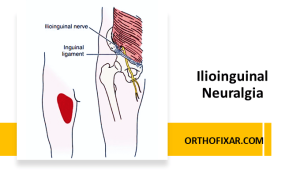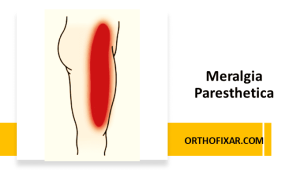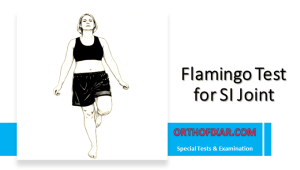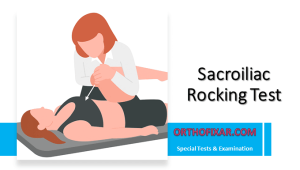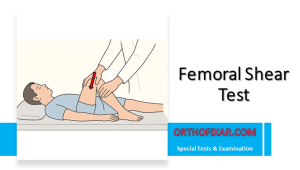Special Test
Goldthwait Test
Last updated on:
November 14, 2025
Estimated Reading Time:
3 Min Read
Reading:
818 Times
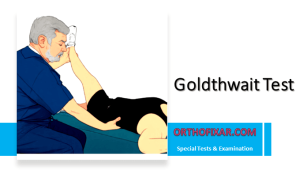
The Goldthwait Test is a clinical examination maneuver used to help differentiate sacroiliac (SI) joint dysfunction from lumbar spine pathology in patients presenting with low back pain or posterior pelvic pain. It is also useful for identifying symptoms related to nerve root irritation, particularly when pain radiates along the distribution of the sciatic nerve.
How to Perform the Goldthwait Test?
- The patient lies supine on the examination table. The lower limbs should be relaxed, and the examiner stands to the patient’s side.
- The examiner places one hand beneath the patient’s lumbar spine, positioning the fingertips in successive interspinous spaces (L5–S1, L4–L5, L3–L4, L2–L3). This allows the examiner to palpate for segmental movement of the lumbar vertebrae during the maneuver.
- With the other hand, the examiner performs a straight-leg raise (SLR), gradually elevating the patient’s lower limb while monitoring the lumbar spine movement with the palpating hand.
See Also: Straight Leg Raise Test
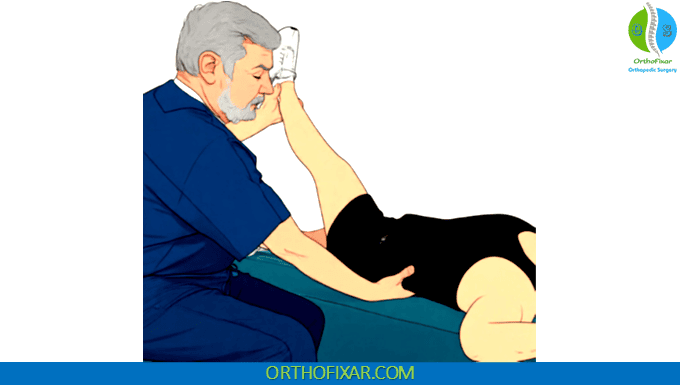
What is the Result of Goldthwait Test?
1. Pain occurs before lumbar interspinous movement
- Suggests sacroiliac joint dysfunction.
- Reason: If the SI joint is irritated, stress from the initial leg elevation is transmitted to the SI joint before the lumbar spine begins to move.
2. Pain occurs during palpable lumbar interspinous movement
- Indicates lumbar spine pathology, such as:
- Facet joint dysfunction
- Intervertebral disc involvement
- Segmental instability
3. Radiating pain along the sciatic nerve distribution
- Suggests neurological involvement, such as:
- Nerve root irritation
- Disc herniation
- Radiculopathy
This pattern is similar to the traditional Straight-Leg Raise Test, but the added palpation of the lumbar spine allows for more precise localization of pathology.
The Goldthwait Test enhances diagnostic accuracy when used in conjunction with other tests such as: Straight-Leg Raise (SLR), FABER test, Yeoman test and Sacral thrust test.
Goldthwait Test – Summary Table
| Aspect | Description |
|---|---|
| Purpose | Differentiate sacroiliac joint dysfunction from lumbar spine pathology; assess for possible nerve root involvement. |
| Patient Position | Supine on examination table with relaxed lower limbs. |
| Examiner Position | One hand under lumbar spine palpating interspinous spaces; other hand elevates the patient’s leg (SLR). |
| Technique | Examiner palpates lumbar interspaces (L5–S1 upward) while performing a straight-leg raise. |
| Positive Finding – Pain before lumbar movement | Indicates sacroiliac joint dysfunction (SI joint stressed first before lumbar motion). |
| Positive Finding – Pain during lumbar interspace movement | Indicates lumbar spine pathology (facet dysfunction, disc issue, segmental instability). |
| Radiating Pain (sciatic distribution) | Suggests nerve root irritation or neurological involvement. |
| Clinical Notes | Enhances localization of symptoms; often used alongside SLR, FABER, sacral thrust, and Yeoman tests. |
References & More
- Cipriano JJ. Photographic Manual of Regional Orthopedic Tests. Baltimore: Williams & Wilkins; 1985.
- Orthopedic Physical Assessment by David J. Magee, 7th Edition.
Orthopedic Angles Calculator
- Lifetime product updates
- Install on one device
- Lifetime product support
App Features:
First Aid App for Android / iOS
- Lifetime product updates
- Install on one device
- Lifetime product support
App Features:
Orthopedic Learning with Q&A Flashcards
- Lifetime product updates
- Install on one device
- Lifetime product support
App Features:
All-in-one Orthopedic App 2025
- Lifetime product updates
- Install on one device
- Lifetime product support

